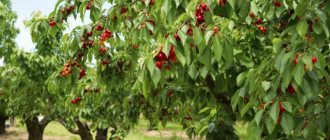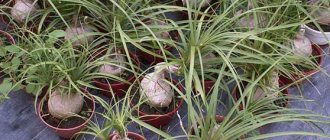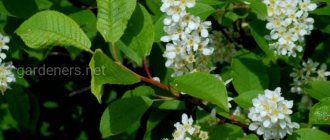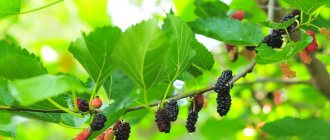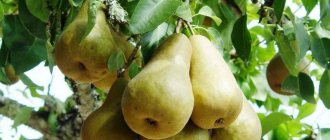Mulberry (also known as mulberry, tyutina or mulberry) is the owner of delicious fleshy berries; today it is also popular for growing as rowan, pine, pear, and cherry. Its aesthetic properties are in no way inferior to its taste, so it is also a wonderful decoration for the garden. Mulberries are also used in folk medicine, in industry, and, of course, mulberries are the main dish for the silkworm.
Features of mulberry
Mulberry is a tree from the Mulberry family and is a wind-pollinated crop. A young mulberry tree is characterized by rapid growth, but development slows down over time.
The average height of the mulberry is 10-15 m and it can live for more than 200 years. In addition to delicious berries, mulberries are famous for their beauty and can become a worthy decoration of any garden, as can be seen in the photo of the mulberry tree.
On the territory of Russia, mulberry is actively cultivated, but mulberry propagation occurs in different ways:
- using seeds;
- by grafting;
- using suckers for planting;
- using layering;
- planting cuttings.
Each method is good and worthy of attention in its own way. Therefore, gardeners can use the one that is most convenient for them.
Mulberry tree in Siberia
Mulberry or mulberry is a tree belonging to the mulberry family, widespread in Southeast Asia, primarily in China and India. This heat-loving plant has been used in silk production for at least five thousand years. There are at least 17 species of mulberries in the world.
Despite the fact that mulberry production is the most famous area of its use, there are other areas of human activity where it is used no less successfully.
Landing rules
If you want to grow a full-fledged tree that produces an abundant amount of fruit, it is important to know when to plant mulberries. Seedlings are planted on the site from early April until sap flow or early September until the end of October.
Experienced gardeners advise planting seedlings in the fall. It is believed that if they survive the first winter, they will not be afraid of subsequent ones.
For planting seedlings, it is important to choose parts of the site that are well lit and protected from the wind. Salty and sandy soil is not suitable for mulberries, but the ground sediments should be at a depth of one and a half meters or more.
Attention! Mulberries can be male or female. Only the female tree bears fruit. The sex of the mulberry is determined only from the age of 4, so seedlings for planting should be purchased only those that have reached 3 years and have already produced their first fruits.
Planting a seedling on a plot includes several stages:
- Initially, you should dig a planting hole measuring 50 cm x 50 cm. If the soil is poor, then the hole should be deeper to provide additional space for fertilizer;
- A layer of fertilizer consisting of 5 kg is laid out at the bottom of the pit. humus and 100 grams of superphosphate;
- then sprinkle the fertilizer with soil so that it does not come into contact with the roots of the seedling;
- the seedling must be placed in the center of the hole, carefully straighten the root system and fill it with two buckets of clean water;
- then he fills the hole with soil, making a small hole near the trunk of the seedling.
Important! If mulberries are planted in the spring, then the pit with fertilizing should be prepared in the fall.
Reproduction methods
Mulberries are grown very rarely from seeds; the grains can be male or female, they take a long time to germinate and develop very slowly. Seedlings require painstaking care; they grow normally only in good lighting and in a certain microclimate. Most often, mulberries are propagated by green or semi-lignified cuttings. Branches with 2-3 buds are cut in the summer, rooted in the ground directly in the garden or on the windowsill, and a mini-greenhouse is built.
Less commonly, cuttings and shoots are taken for planting. Seedlings with their own well-developed root system are separated from the root of the mother tree and immediately transplanted to a new place (according to all the rules). If desired, you can get a harvest of blue and white fruits from one mulberry; this is possible if you graft. Mulberries are grafted in several ways, the simplest is copulation:
- Identical oblique cuts are made on the scion and rootstock (between the buds).
- The sections are connected so that the mechanical fastening of the tissues between the cuttings is tight.
- The attachment point is bandaged with special electrical tape or plastic film; it should be soft, food grade suitable.
Attention!
When tying the graft with film, make sure that the scion does not move, otherwise the cutting will not take root. Copulation is carried out within 2 weeks after the start of sap flow.
Experienced gardeners recommend copulating with a tongue; the process is a little more complicated, but more reliable. Oblique cuts on the grafted parts are supplemented with parallel serifs; when joined, they overlap each other, ensuring the most durable connection of the tissues of the cuttings. The dressing is removed only after the grafted branch begins to actively develop.
Rules of care
It is very important not only to follow the correct planting process, but also the rules for caring for mulberry seedlings.
The tree does not need special care, but there are mulberry diseases and pests that, if they occur, should not hesitate to adopt methods to combat them.
In order to reduce the risk of possible infection of a young tree with diseases, systematic treatment of mulberry by spraying the foliage and trunk is necessary. Fungicidal and insecticidal preparations are used as treatment agents.
The spraying procedure is carried out from April until the buds begin to bloom and in October, after the growing season ends.
Using a nitrafen solution, you can eliminate pests and get rid of diseases. In the spring, it is best to spray the tree with urea using a 7 percent solution. This will help neutralize pests and pathogenic microorganisms.
Contraindications to the use of mulberry products
Mulberry fruits are a fairly strong allergen. They can cause a reaction at the first use: skin rash, itching, hay fever. In some cases, swelling of the eyelids or lips is likely - a manifestation of angioedema. If you are intolerant, healthy berries will have to be excluded from your diet.
Mulberry juice is prohibited for consumption by those suffering from cholelithiasis, stomach ulcers, ulcerative colitis, and advanced stages of diabetes.
Mulberry dishes should not be given to young children under 2 years of age.
When to fertilize?
You need to start feeding mulberries from the beginning of spring to July. In the spring, the crop requires nitrogen fertilizing, and in the summer use fertilizers with phosphorus and potassium.
Fruiting
Mulberry fruits are drupes gathered together.
The harvest ripens unevenly. Fruiting can last 2-3 weeks. In the southern regions, the berries will ripen already at the beginning of June - and it makes no difference whether the berries are white or black.
The further north the area, the later the mulberry tree bears fruit. In the Urals, Moscow region and Siberia, harvest time may fall at the end of July - mid-September. Ripening is directly affected by persistent heat, lack of rain and frost.
Formed and ripe fruits can hang on the tree for no more than 30 days. Berries that fall to the ground become unfit for consumption within a few hours. Therefore, experienced gardeners, at the peak of harvest, spread a piece of cloth under the tree, shake the tree, and quickly process the resulting fruits.
Pruning rules
Mulberry pruning is recommended to be done during the dormant period. The best time for this procedure is early spring before the time when sap flow begins.
Formative anti-aging pruning is carried out from the last days of April to the first days of May, before the buds begin to open.
In autumn, sanitary pruning is carried out. It is important to ensure that during this period the temperature does not drop below -10C.
There are different types of this crop and it is important to know how to prune mulberry according to its variety:
- Weeping mulberry needs thinning, so you need to shorten the stems and branches. This variety of mulberry is characterized by rapid recovery, so the tree is not afraid of even severe pruning;
- stamped mulberries require formative pruning. On the main stem, a crown shape is formed resembling a ball or in the form of a falling frame of branches;
- The most difficult pruning is for decorative mulberry varieties. In addition, it is difficult to maintain the originality of the shape of this tree.
In the spring, branches that are more than one and a half meters high are cut off from a young tree. To form the crown, all branches competing with the stem are removed.
In autumn, pruning is carried out after the leaves fall. This is sanitary pruning, when dry and damaged branches are removed.
Description and varieties
The compact weeping mulberry was bred primarily for decorative purposes; there are separate, non-fruiting varieties, they are often called park ones.
The tree is deciduous, up to 3 m in height, crown width is about 1.5–2 m. The leaves of the weeping mulberry are larger than those of the species, they are the same in shape and color. In summer, the plates are green, and towards mid-autumn they acquire a straw hue. The branches are long, descending to the ground, like those of a willow or willow. The trunk is even and smooth. On a note! In the first 2–3 years after planting, the weeping mulberry develops very quickly, then the growth rate gradually decreases. The average lifespan of a tree is about 150–200 years.
The flowering period and yield indicators depend on the climate; in the middle zone, mulberries usually bloom in early May, in the south - in the last ten days of March, and in the northern regions towards the end of spring. The harvest in different regions is harvested from July to August. One-year-old, grafted seedlings begin to bear fruit 2–3 years after planting, without grafting - 5 or 6. There are many ovaries even in the most unfavorable years. Harvesting is convenient; there is no need to bend branches or carry a stepladder around the garden.
The fruits are drupes, similar to blackberries without a stalk, up to 1.5–5 cm long, weighing about 6 g, pink, dark purple or white, sweet and juicy with barely perceptible sourness and a delicate, pleasant aroma. In the south, all varieties of mulberries grow well, and in the northern regions it is recommended to grow mulberries with white fruits. It doesn’t matter what color the drupes are, they all have a rich composition of substances beneficial to the human body. In total, there are 17 species of weeping mulberries; they are most often found in cultivation, but there are also wild ones. The most popular hybrids:
- Black Baroness. The fruits are up to 4.5 cm in length, dark purple. The variety can withstand frosts up to 30°C.
- White mulberry Pendula. The leaves are emerald, large, heart-shaped. It blooms later than other varieties - in May. The drupes are white, juicy, but dense, making them easy to transport.
- Pink Smolensk. Unpretentious, decorative hybrid. The fruits are small, raspberry-colored, and very sweet. Sometimes it bears fruit in the first year after planting.
Up to 100–115 kg of harvest per season are harvested from specific mulberry trees; weeping ones are less prolific, the maximum mark when grown in the south is 90 kg, and in the north only 70. Standard mulberry is popular among summer residents, so breeders continue to work on developing lower varieties, which can be used to decorate paths or to zone areas.
Decorative weeping mulberries are planted in city parks, along roads and alleys. The trees are compact and neat, do not take up much space, and are ideal for decorating small areas. In winter, the foliage falls, but the trees remain beautiful due to their unusual, graceful flowing branches. Mulberries are placed near terraces and gazebos, planted in single and group plantings, and used as a hedge or background for flower beds and flower beds. In autumn, bright yellow foliage combines well with spruces, arborvitae and firs.
You may be interested in:
The most useful autumn berries: when to collect Living medicine - berries: grown in the garden,...Read more...
Mulberry varieties
There are two varieties of mulberry, black and white, and both are equally popular among gardeners. White mulberry is a frost-resistant tree that does not require special care, and black mulberry is drought-resistant, but does not tolerate winter so well.
In fact, mulberry is an unpretentious crop that, with minimal care, produces juicy and tasty fruits for many years. And after the fruiting period, it will decorate your garden, creating a cozy corner where you can relax in the shade of the dense crown.
BENEFICIAL FEATURES
We recommend that any gardener grow frost-resistant mulberry in order to regularly receive from it almost all the vitamins and unique beneficial substances that are not contained in other plants.
Its fruits contain a high content of vitamin C, all B vitamins, vitamins A, E, K, PP. Berries are rich in the minerals iron, magnesium, potassium, sodium, calcium, selenium, zinc. They contain organic acids, mono- and disaccharides, glucose, fructose, sucrose.
Only they contain morin, which is invaluable for the human body, as well as flavonoids, phenols, antioxidants, natural antibiotics, fatty oils, and many other useful substances.
In Chinese medicine, mulberry fruits and leaves are considered the most valuable components of many herbal preparations, decoctions and tinctures.
Photo of mulberry
Choosing a place for a seedling
To plant a mulberry seedling, you must consider:
- soil: well-drained, fertile soil is suitable. The distance from the roots to the aquifer is at least 1.5 m.
- lighting: choose sunny places. Seedlings should not be planted under the canopy of tall mature trees, which will block the sun's rays.
- protection from the wind: seedlings take root better when protected from the wind by the walls of garden buildings or fences. When planting, a support peg is immediately installed in the hole.
Reviews
Mulberries come in different varieties: red, blue, white. I show two varieties, white and blue. Here's what they write: It has an edible fruit, from which filling for pies is made, wines, mulberry vodka and soft drinks are made. Red mulberries (native to North America) and black mulberries (native to southwest Asia) have a pleasant aroma. White mulberries (native to East Asia) have a different odor, often characterized as "tasteless." The ripe fruit contains large amounts of resveratrol, which is a strong plant antioxidant. Mulberry leaves, especially white mulberry, are the main source of food for silkworm larvae, whose pupa is used to produce silk.
Alla Timofeevna
https://frauflora.ru/viewtopic.php?p=164842&sid=20b9025b22a0fab354f6bac9a6775754#p164842
Berries
Fresh harvest is especially valuable for human health due to its antioxidant content - resveratrol.
Berries cleanse blood vessels, reduce sugar, and promote metabolism. They are good for diabetics to eat. The juice of a medicinal plant, like a vacuum cleaner, cleans the bile ducts and dissolves atherosclerotic deposits.
The fruits contain anthocyanins, which prolong a person’s youth and increase the tone of the body. In any form they help with vitamin deficiency. In the summer they make preparations for the winter, and in the winter and spring they eat preserves, jams, and marshmallows.
Rhizomes
Medicines from the roots combat high blood pressure. Tea drives away worms.
When using, take into account medical indications. Before prescribing, consult with your doctor.
The unpretentious care and high value of mulberry are recognized by more and more lovers of six hundred square meters. Look at the mulberry tree photo and choose. Bookmark the page with growing recommendations.
